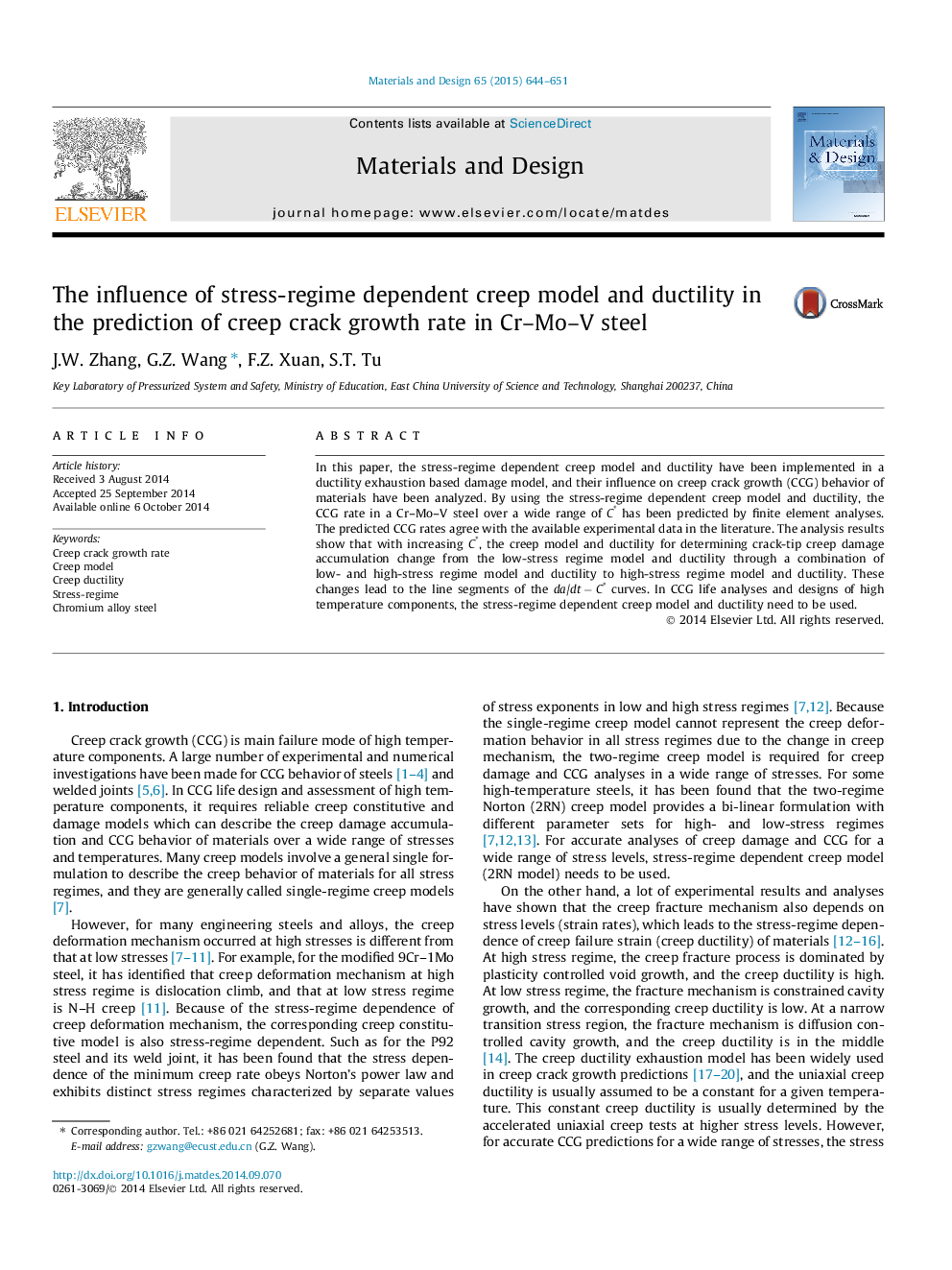| Article ID | Journal | Published Year | Pages | File Type |
|---|---|---|---|---|
| 828851 | Materials & Design (1980-2015) | 2015 | 8 Pages |
•Stress dependent creep model and ductility are implemented in a creep damage model.•Creep crack growth rate in Cr–Mo–V steel is predicted over a wide range of C*.•Creep model and ductility for determining creep damage change with increasing C*.•This change leads to the line segments of the da/dt − C* curves.
In this paper, the stress-regime dependent creep model and ductility have been implemented in a ductility exhaustion based damage model, and their influence on creep crack growth (CCG) behavior of materials have been analyzed. By using the stress-regime dependent creep model and ductility, the CCG rate in a Cr–Mo–V steel over a wide range of C* has been predicted by finite element analyses. The predicted CCG rates agree with the available experimental data in the literature. The analysis results show that with increasing C*, the creep model and ductility for determining crack-tip creep damage accumulation change from the low-stress regime model and ductility through a combination of low- and high-stress regime model and ductility to high-stress regime model and ductility. These changes lead to the line segments of the da/dt − C* curves. In CCG life analyses and designs of high temperature components, the stress-regime dependent creep model and ductility need to be used.
